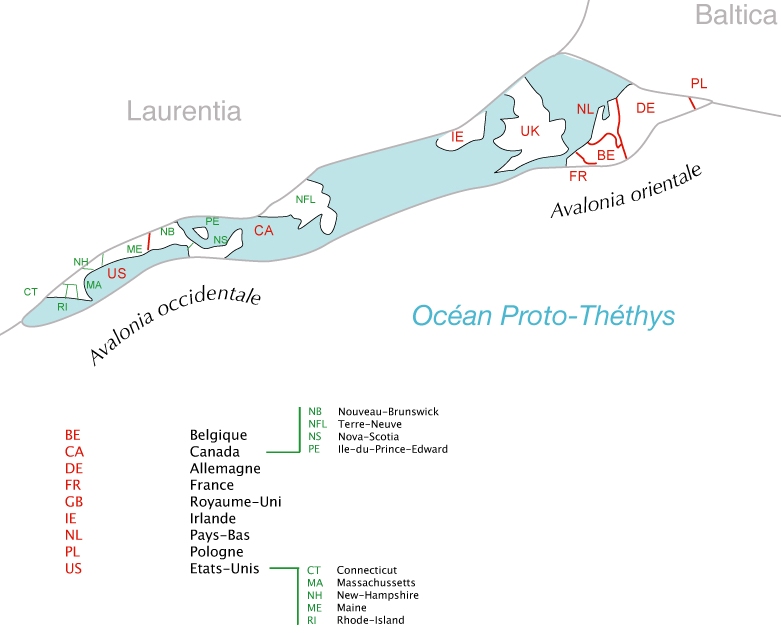Aspy Fault on:
[Wikipedia]
[Google]
[Amazon]
 The Aspy Fault () is a
The Aspy Fault () is a
Wilkie SugarloafCape Breton Highlands National Park of Canada: Faults and Canyons in Cape Breton Highlands National Park
Natural history of Nova Scotia Geology of Nova Scotia Strike-slip faults {{NovaScotia-geo-stub
 The Aspy Fault () is a
The Aspy Fault () is a strike-slip fault
In geology, a fault is a planar fracture or discontinuity in a volume of rock across which there has been significant displacement as a result of rock-mass movements. Large faults within Earth's crust result from the action of plate tecton ...
that runs through 40 km of Cape Breton
Cape Breton Island (french: link=no, île du Cap-Breton, formerly '; gd, Ceap Breatainn or '; mic, Unamaꞌki) is an island on the Atlantic coast of North America and part of the province of Nova Scotia, Canada.
The island accounts for 18 ...
, Nova Scotia
Nova Scotia ( ; ; ) is one of the thirteen provinces and territories of Canada. It is one of the three Maritime provinces and one of the four Atlantic provinces. Nova Scotia is Latin for "New Scotland".
Most of the population are native En ...
and is often thought to be a part of the Cabot Fault
Cabot may refer to:
Businesses
* Cabot Corporation, an American chemicals company
* Cabot Creamery, an American dairy cooperative
Fictional characters
* Alexandra Cabot, in the ''Law & Order'' universe
* Leigh Cabot, from Stephen King's 1983 ...
/ Great Glen Fault
The Great Glen Fault is a strike-slip fault that runs through the Great Glen in Scotland. The fault is mostly inactive today, but occasional moderate tremors have been recorded over the past 150 years.
Location
Aligned northeast to southwest, t ...
system of Avalonia
Avalonia was a microcontinent in the Paleozoic era. Crustal fragments of this former microcontinent underlie south-west Great Britain, southern Ireland, and the eastern coast of North America. It is the source of many of the older rocks of We ...
. Part of the fault runs through Cape Breton Highlands National Park
Cape Breton Highlands National Park is a Canadian national park on northern Cape Breton Island in Nova Scotia.
The park was the first national park in the Atlantic provinces of Canada and covers an area of . It is one of 42 in Canada's syste ...
. This fault runs southward from Cape North through the Margaree Valley. The Aspy River
The Aspy River () is a river on northeastern Cape Breton Island which rises in the Cape Breton Highlands and empties into Aspy Bay. The North Aspy follows the ancient Aspy Fault which extends for 40 km inland from the coast and extends along ...
and the upper section of the Margaree River
The Margaree River (''Abhainn Mhargaraidh'') is a river on Cape Breton Island in Nova Scotia. The northeast branch of the river derives from the watershed of the Cape Breton Highlands, while the Southwest Margaree flows northeast from Lake Ainsli ...
follows the trace of the fault. Evidence shows movement in this fault dating back to the Ordovician period
The Ordovician ( ) is a geologic period and system, the second of six periods of the Paleozoic Era. The Ordovician spans 41.6 million years from the end of the Cambrian Period million years ago (Mya) to the start of the Silurian Period Mya.
T ...
when it was probably created when two continental plates collided and pushed the seafloor upwards, also creating the Appalachian Mountains
The Appalachian Mountains, often called the Appalachians, (french: Appalaches), are a system of mountains in eastern to northeastern North America. The Appalachians first formed roughly 480 million years ago during the Ordovician Period. The ...
. Erosion and the presence of this fault have created much of the scenery known today as the Cape Breton Highlands
The Cape Breton Highlands (french: Plateau du Cap-Breton, gd, Àrd-thalamh Cheap Bhreatainn), commonly called the Highlands, refer to a highland or mountainous plateau across the northern part of Cape Breton Island in the Canadian province of N ...
.
References
External links
Wilkie Sugarloaf
Natural history of Nova Scotia Geology of Nova Scotia Strike-slip faults {{NovaScotia-geo-stub